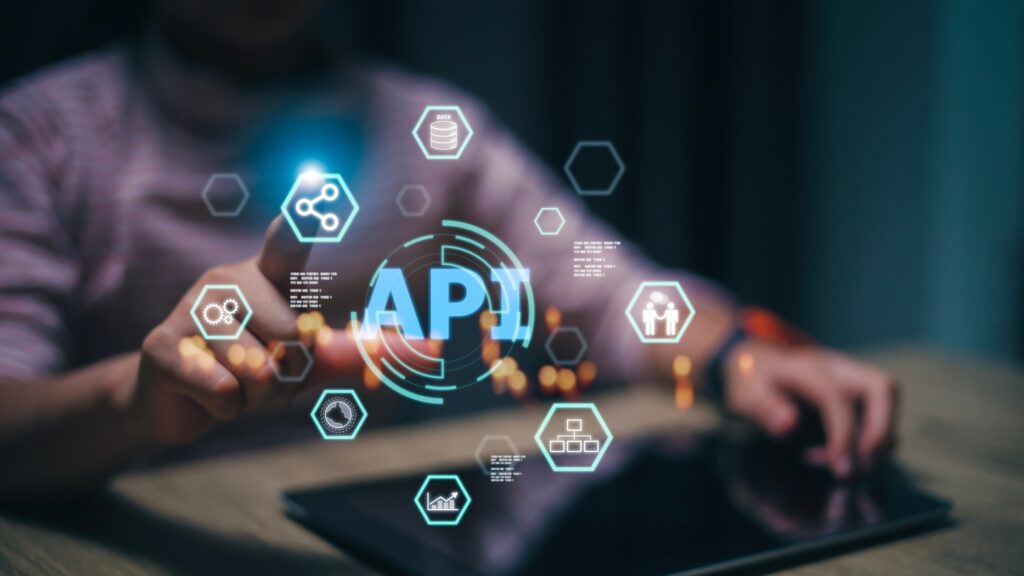APIs have taken center stage in software development, acting as a bridge between different layers of the software and applications, aiding the transfer of data and logic.
What is API?
API or Application Programming Interfaces act as a middle layer connecting two different systems or layers of application, mainly the database and presentation layers. As it is sandwiched between the two layers and is in direct contact with both, it acts as a medium for data exchange and communication between the systems or the layers. In simple terms, an API is a messenger that takes requests and relays them to the system, then returns the system’s response back to the requester.
What is API Testing?
Similar to Software Testing practices, API testing tests the API for reliability, functionality, and performance. While retaining the same working principle as software testing, it’s somewhat different based on the procedure. Instead of using the standard input interface, API testing uses specialized software to send calls to API and analyze its response. Compared to GUI testing, which focuses mainly on appearance and validates the presentation aspects of a web application, API testing focuses on validating the inherent business logic, security, and data responses.
Different Types of Software Testing?
Unit Testing
It’s the most basic of the API testing and, as the name suggests, aims only at a single request to a single endpoint and for a single response. Due to the simplicity of this type of API testing, unit testing can usually be done manually via the command line or using tools like SoapUI.
End-To-End Testing
As the primary function of API is to transfer data and logic from one component to another, end-to-end API testing aims to validate this flow of data and detect any possible hindrance between the path. End-to-end API testing is done to validate the API connections to different components and check if the data and information flow smoothly or not.
Integration Testing
APIs connect different layers of the system, software, or application and therefore act as a medium of integration among these different layers. Integration testing aims to test API’s connections with the layers and therefore is the most common form of API testing.
Performance Testing
It is obviously necessary to ensure that the API is performing the task it is designed for. Therefore, performance testing is usually done on the API at the last stage of the testing process. However, performance testing is the most extensive and sophisticated of all the Software Testing types. It’s because it requires specific hardware, a specialized skill set, and a particular testing environment.
Security Testing
Another crucial stage in any API testing process is security testing. APIs are the backbone of any app or software these days. If an API is compromised due to security vulnerabilities, the whole system will be at risk of an attack, leading to significant financial losses and tarnished reputation.
The Future of API Testing
Adapting to the Changing Landscape As technology advances and the digital world continues to evolve, Software testing is expected to play an increasingly central role in the development and maintenance of software systems. Here are some key trends and considerations for the future of Software testing:
- Test microservices and APIs: Adoption of microservices architecture is on the rise, where applications are broken down into smaller, independently deployable services. Each of these services communicates through an API. With this change, API testing will become even more necessary to ensure the seamless interaction of microservices and their overall reliability.
- Continuous Integration/Continuous Deployment (CI/CD): As organizations adopt CI/CD pipelines, API testing will be integrated into these pipelines for more frequent and automated testing. This approach enables rapid development and deployment cycles while maintaining software quality through comprehensive API testing.
- Security challenges: Because APIs handle sensitive data and act as gateways to critical systems, security testing will continue to be an important priority in Software testing. Identifying and remediating vulnerabilities will be a top priority to prevent data breaches and cyberattacks.
- IoT Test: The Internet of Things (IoT) relies heavily on APIs to support communication between devices. API testing will be instrumental in ensuring the reliability and security of these interactions in the ever-expanding IoT ecosystem.
- AI and Machine Learning in Software Testing: AI and machine learning will be leveraged to automate test case generation, improve test coverage, and identify patterns and anomalies in API behavior. This will lead to a more efficient and effective testing process.
- OpenAPI and Swagger: Standardized API documentation tools like OpenAPI and Swagger are growing in popularity. These tools help streamline API testing by providing clear specifications and documentation, making it easier to create and execute test cases.
- DevOps and collaboration: API testing will increasingly be seen as a collaborative effort between developers, testers, and operations teams. The lines between these roles will blur as they work together to ensure API reliability and performance.
- Edge computing: Edge computing, which brings computing and data storage closer to the data source, is becoming increasingly popular. API testing will extend to these edge environments, ensuring that APIs operate optimally in these distributed systems.
Conclusion
A solid API testing environment is essential for designing and developing efficient apps and systems. API testing allows structuring a reliable testing environment, enabling you to identify defects and vulnerabilities at different layers of your app, thereby helping you eliminate them.API testing is evolving as the software development and connectivity landscape changes. As the digital domain continues to expand and become more complex, API testing remains an indispensable method to ensure the reliability, security and functionality of the APIs that underpin the technology world connect. By adopting these emerging trends and adapting to new challenges, organizations can maintain the quality and resilience of their software systems, thereby delivering value to users. and maintain a competitive advantage in the digital age.



